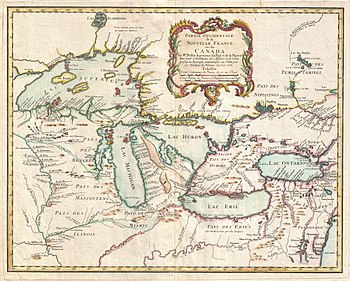
| Foreign alliances of France | |||||||||||||||||||||||||||||||||||||||||||||||||||||||||||||
|---|---|---|---|---|---|---|---|---|---|---|---|---|---|---|---|---|---|---|---|---|---|---|---|---|---|---|---|---|---|---|---|---|---|---|---|---|---|---|---|---|---|---|---|---|---|---|---|---|---|---|---|---|---|---|---|---|---|---|---|---|---|
| |||||||||||||||||||||||||||||||||||||||||||||||||||||||||||||
The Franco-Indigenous Alliance was an alliance between North American indigenous nations and the French, centered on the Great Lakes and the Illinois country during the French and Indian War (1754–1763).[1] The alliance involved French settlers on the one side, and indigenous peoples such as the Abenaki, Odawa, Menominee, Winnebago, Mississauga, Illinois, Sioux, Huron, Petun, and Potawatomi on the other.[2] It allowed the French and the natives to form a haven in the middle-Ohio valley before the open conflict between the European powers erupted.[3]
© MMXXIII Rich X Search. We shall prevail. All rights reserved. Rich X Search
